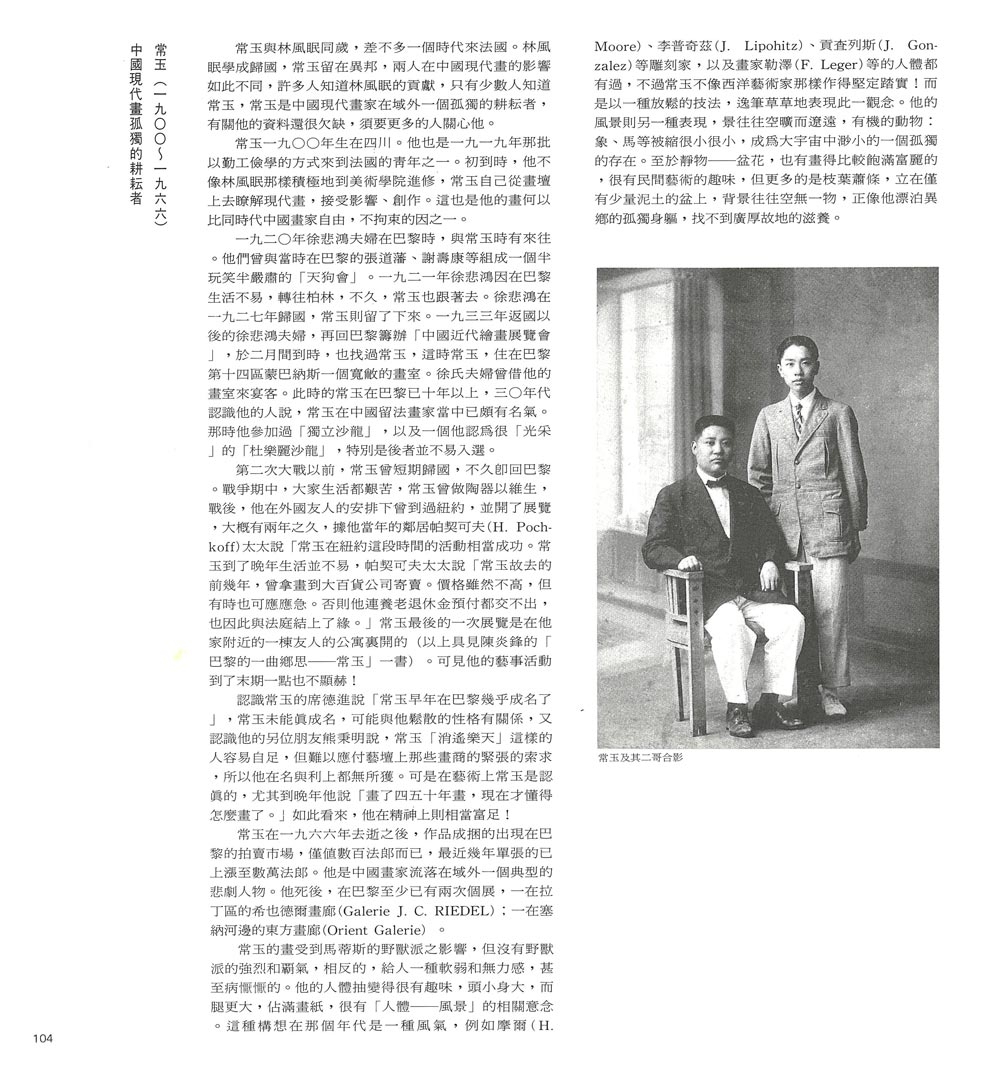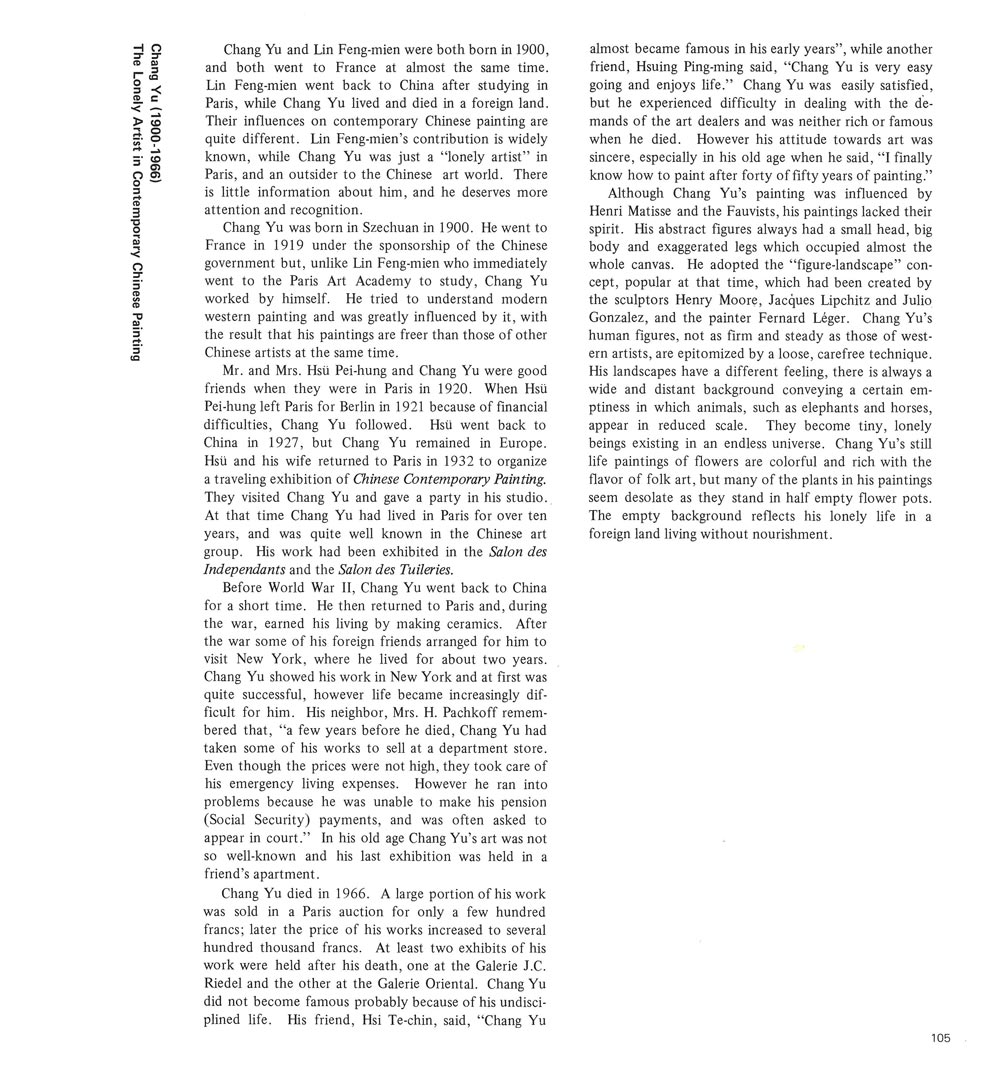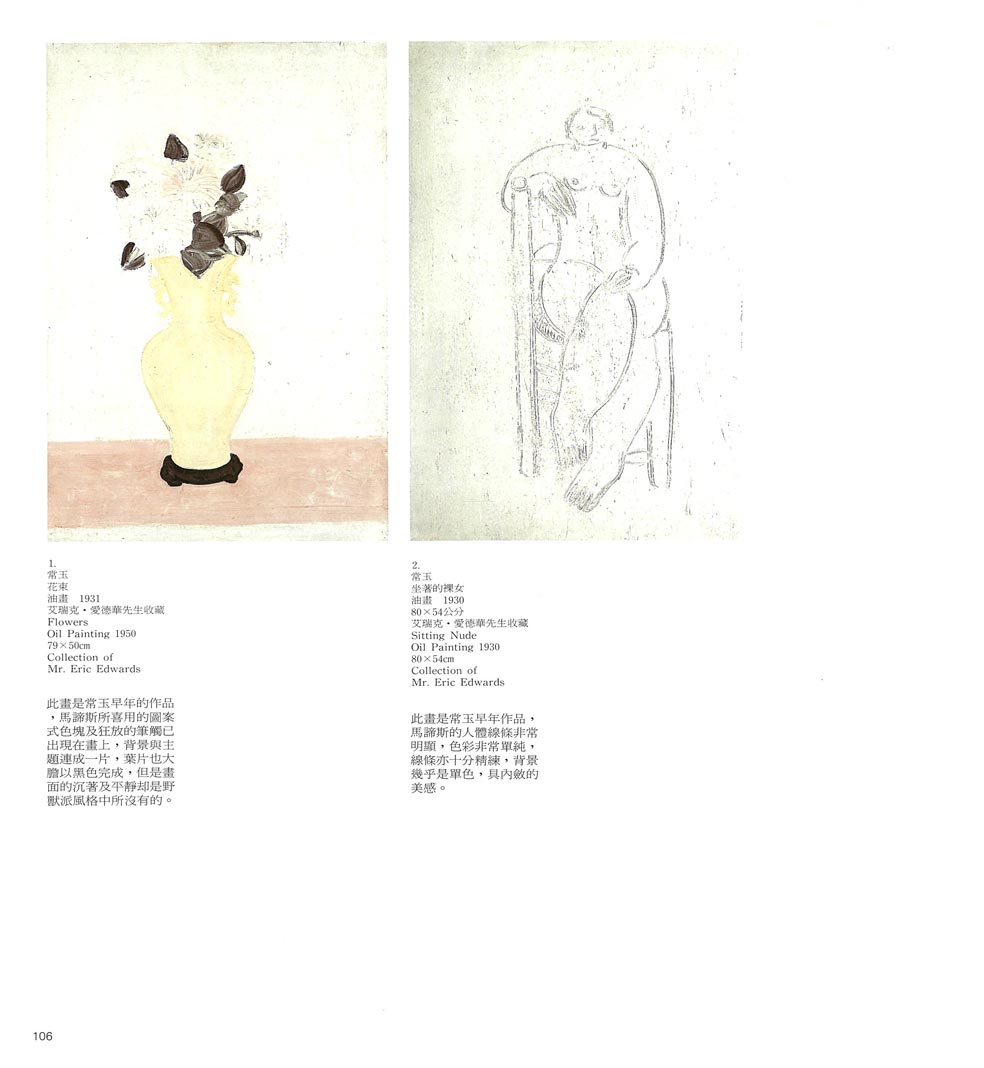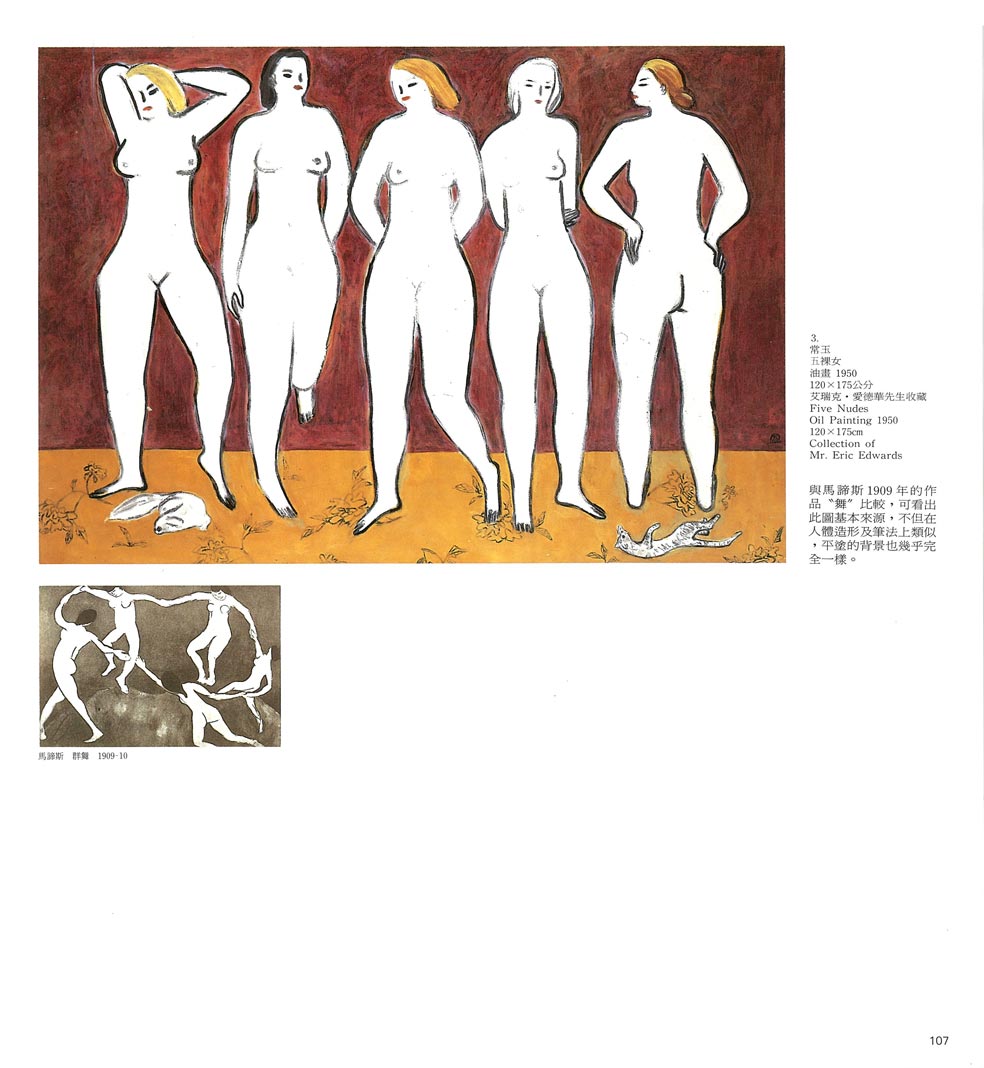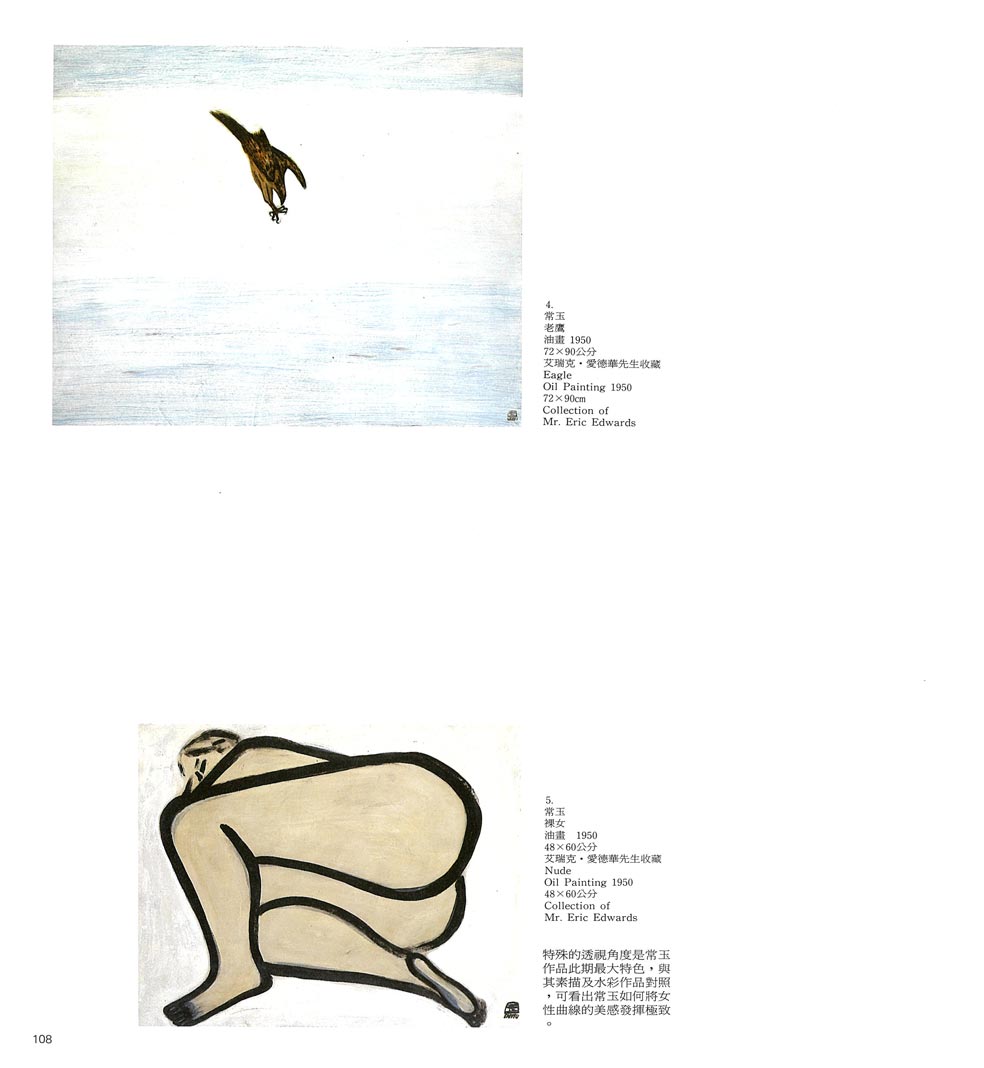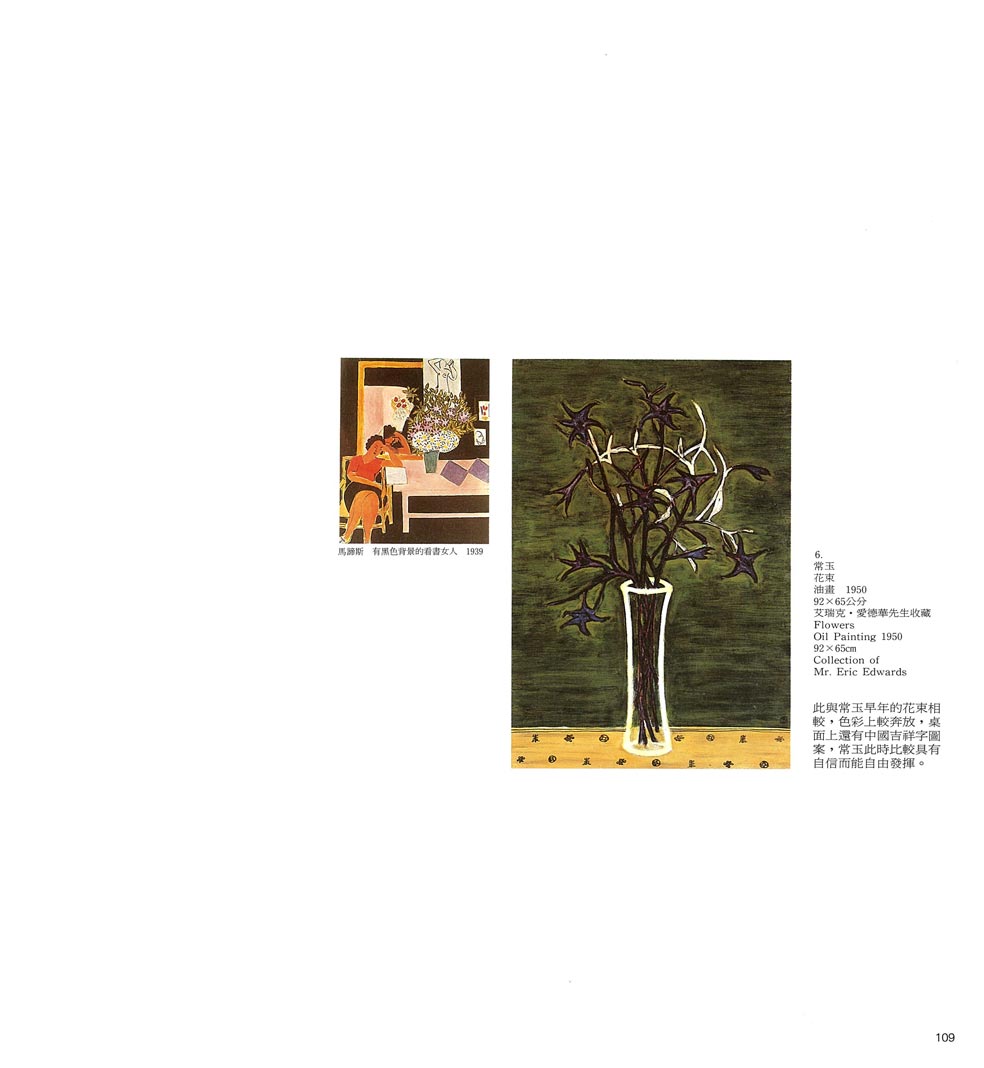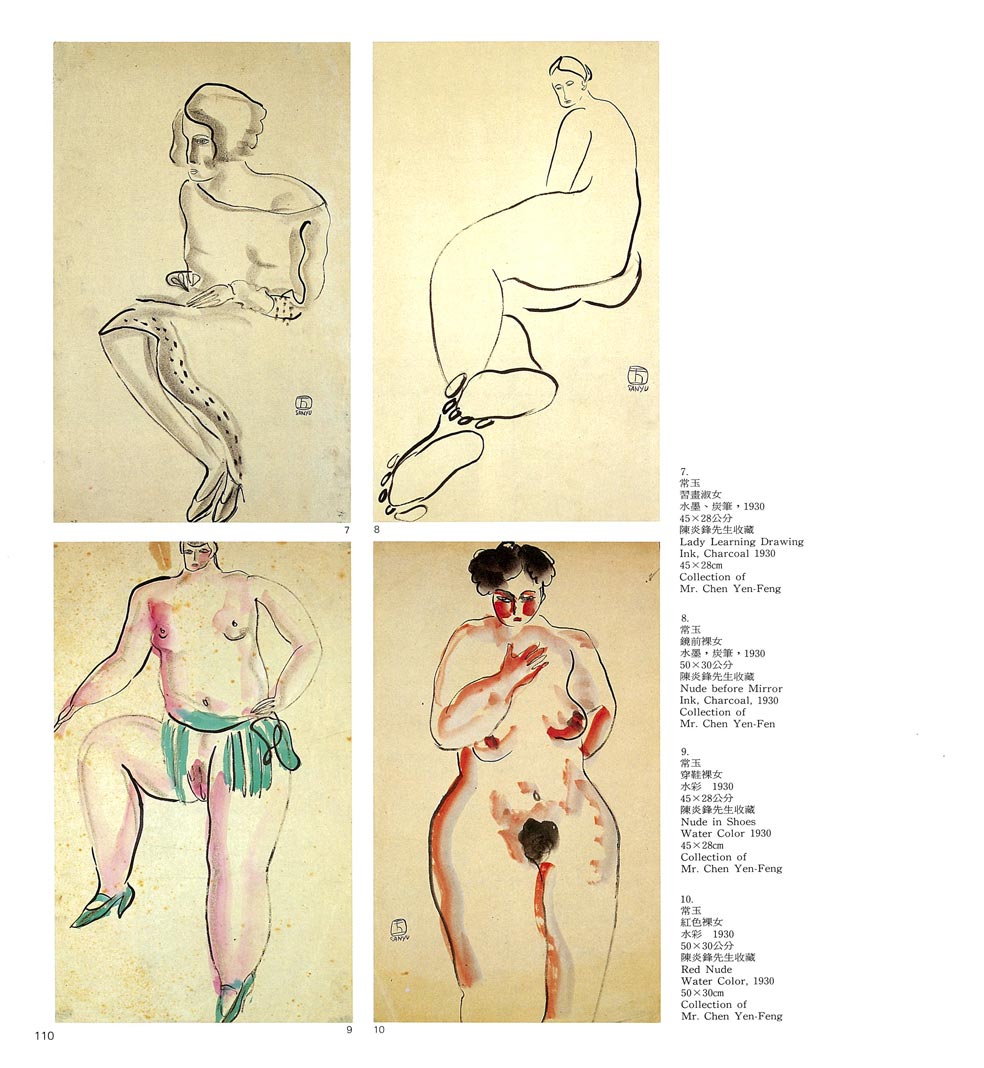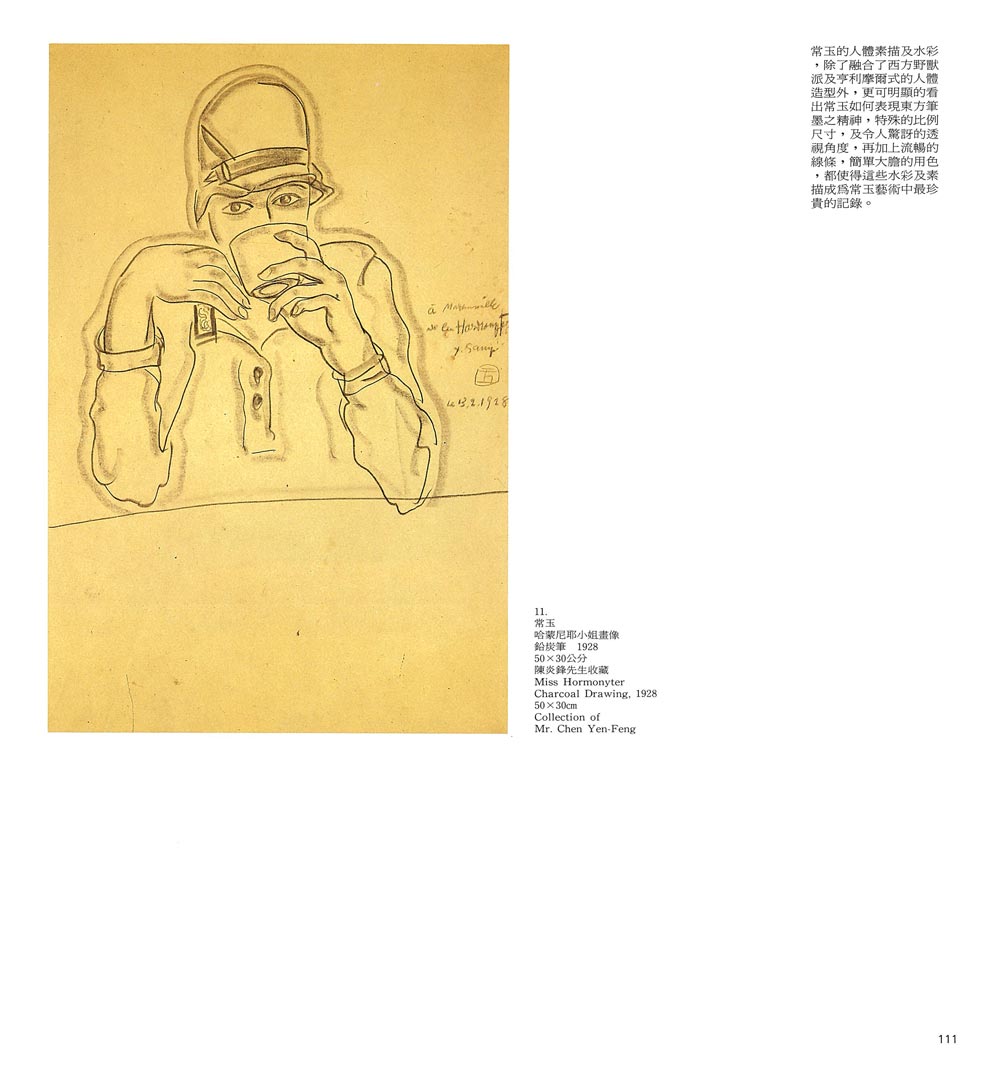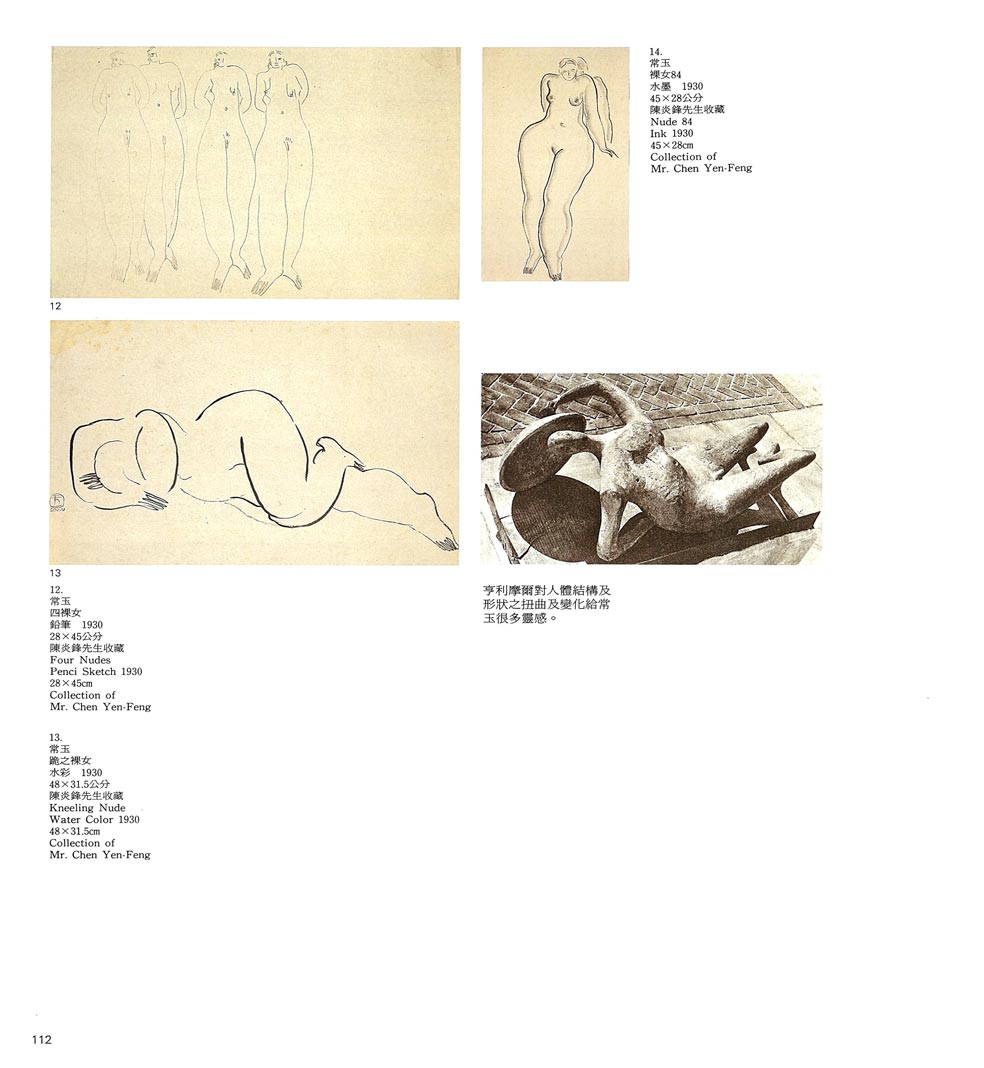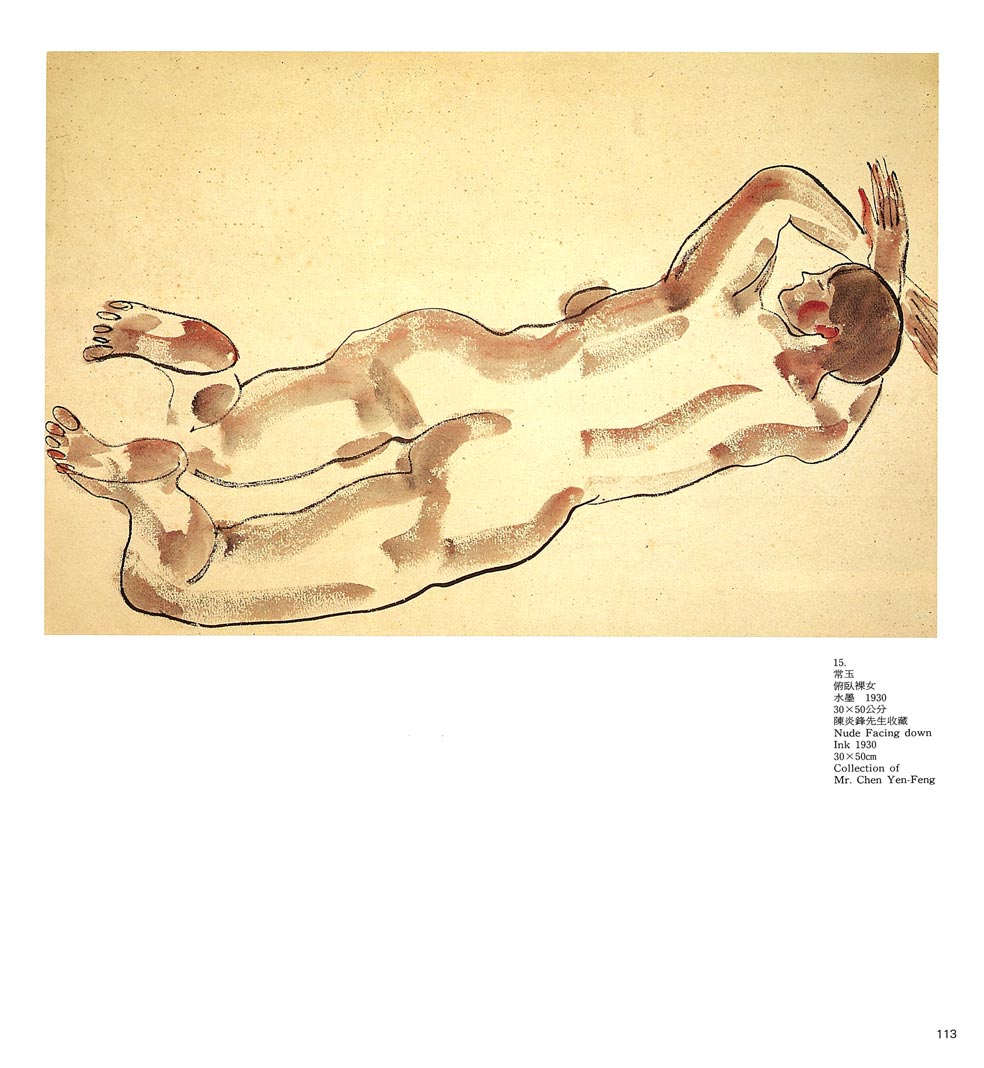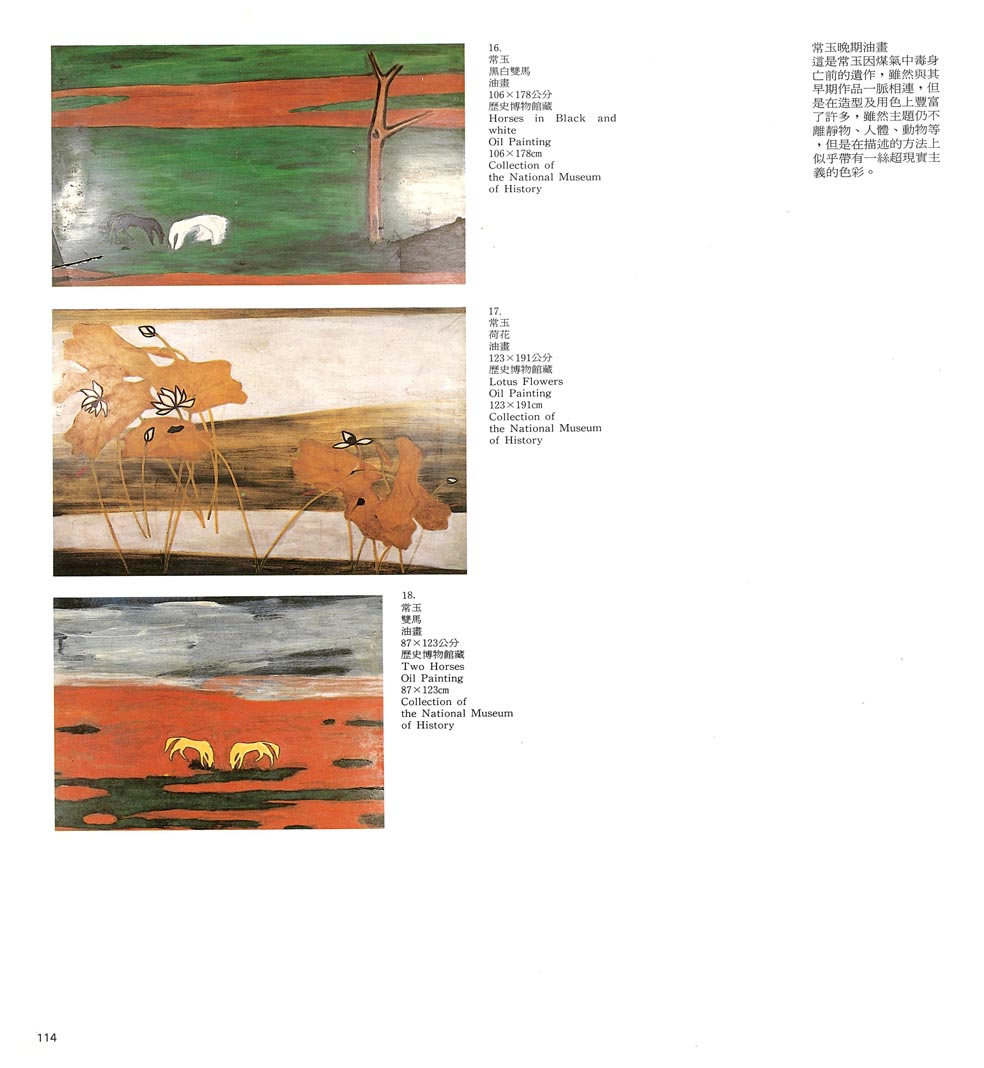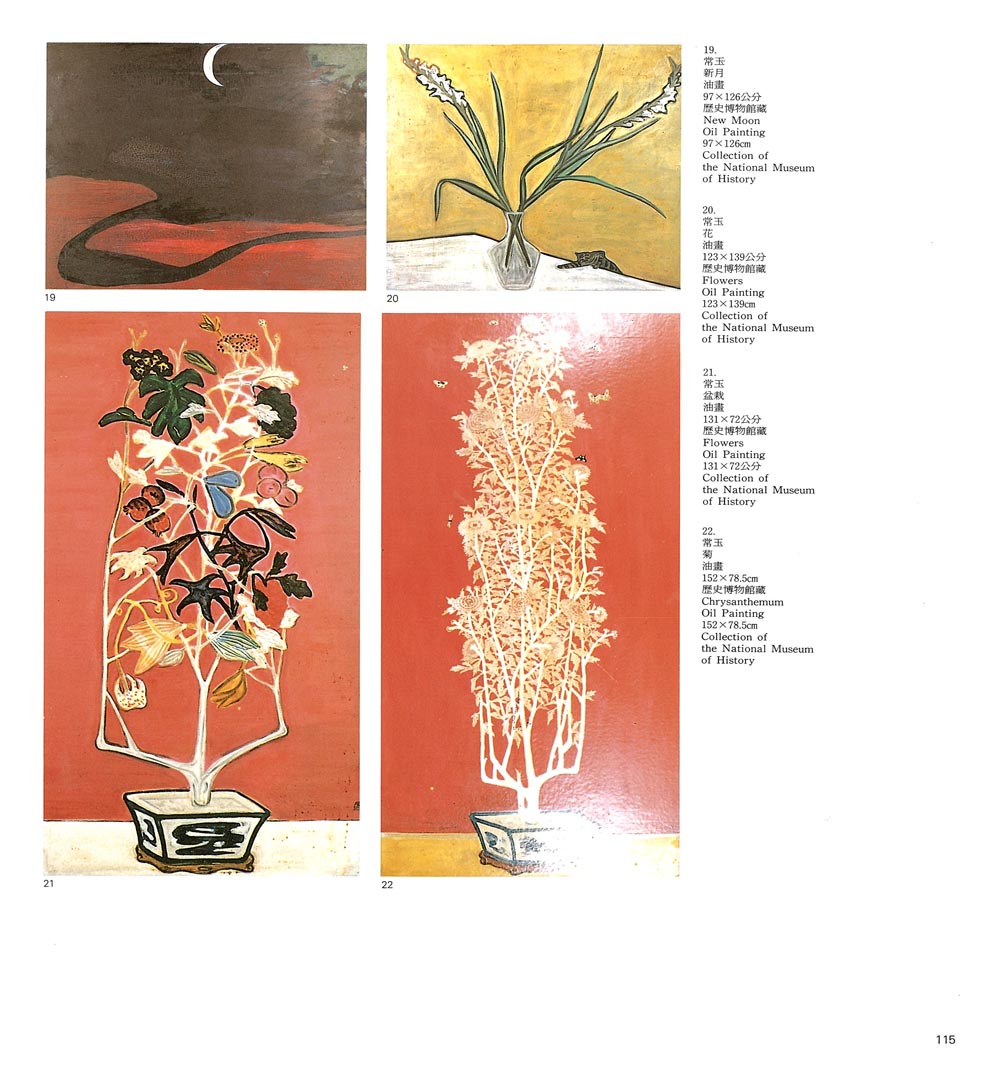Chang Yu and Lin Feng-mien were both born in 1900, and both went to France at almost the same time. Lin Feng-mien went back to China after studying in Paris, while Chang Yu lived and died in a foreign land. Their influences on contemporary Chinese painting are quite different. Lin Feng-mien’s contribution is widely known, while Chang Yu was just a “lonely artist” in Paris, and an outsider to the Chinese art world. There is little information about him, and he deserves more attention and recognition.
Chang Yu was born in Szechuan in 1900. He went to France in 1919 under the sponsorship of the Chinese government but, unlike Lin Feng-mien who immediately went to the Paris Art Academy to study, Chang Yu worked by himself. He tried to understand modern western painting and was greatly influenced by it, with the result that his paintings are freer than those of other Chinese artists at the same time.
Mr. and Mrs Hsü Pei-hung and Chang Yu were good friends when they were in Paris in 1920. When Hsü Pei-hung left Paris for Berlin in 1921 because of financial difficulties, Chang Yu followed. Hsü went back to China in 1927, but Chang Yu remained in Europe. Hsü and his wife returned to Paris in 1932 to organize a traveling exhibition of Chinese Contemporary Painting. They visited Chang Yu and gave a party in his studio. At that time Chang Yu had lived in Paris for over ten years, and was quite well known in the Chinese art group. His work had been exhibited in the Salon des Independants and the Salon des Tuileries.
Before World War II, Chang Yu went back to China for a short time. He then returned to Paris and, during the war, earned his living by making ceramics. After the war some of his foreign friends arranged for him to visit New York, where he lived for about two years. Chang Yu showed his work in New York and at first was quite successful, however life became increasingly difficult for him. His neighbor, Mrs. H. Pachkoff remembered that, “a few years before he died, Chang Yu had taken some of his works to sell at a department store. Even though the prices were not high, they took care of his emergency living expenses. However he ran into problems because he was unable to make his pension (Social Security) payment, and was often asked to appear in court.” In his old age Chang Yu’s art was not so well-known and his last exhibition was held in a friend’s apartment.
Chang Yu died in 1966. A large portion of his work was sold in a Paris auction for only a few hundred francs; later the price of his works increased to several hundred thousand francs. At least two exhibits of his work were held after his death, one at the Galerie J.C. Riedel and the other at the Galerie Oriental. Chang Yu did not become famous probably because of his undisciplined life. His friend, His Te-chin, said, “Chang Yu almost became famous in his early years”, while another friend, Hsiung Ping-ming said, “Chang Yu is very easy going and enjoys life.” Chang Yu was easily satisfied, but he experienced difficulty in dealing with the demands of the art dealers and was neither rich or famous when he died. However his attitude towards art was sincere, especially in his old age when he said, “I finally know how to paint after forty of fifty years of painting.”
Although Chang Yu’s painting was influenced by Henri Matisse and the Fauvists, his paintings lacked their spirit. His abstract figures always had a small head, big body and exaggerated legs which occupied almost the whole canvas. He adopted the “figure-landscape” concept, popular at that time, which had been created by the sculptors Henry Moore, Jacques Lipchitz and Julio Gonzalez, and the painter Fernard Léger. Chang Yu’s human figures, not as firm and steady as those of western artists, are epitomized by a loose, carefree technique. His landscapes have a different feeling, there is always a wide and distant background conveying a certain emptiness in which animals, such as elephants and horses, appear in reduced scale. They become tiny, lonely beings existing in an endless universe. Chang Yu’s still life paintings of flowers are colorful and rich with the flavor of folk art, but many of the plants in his paintings seem desolate as they stand in half empty flower pots. The empty background reflects his lonely life in a foreign land living without nourishment.
